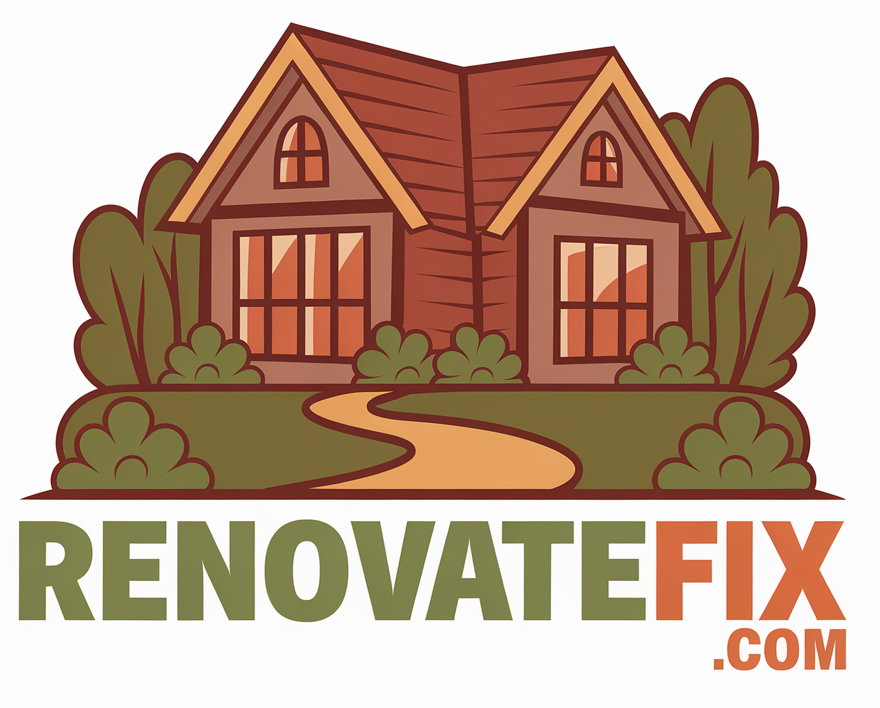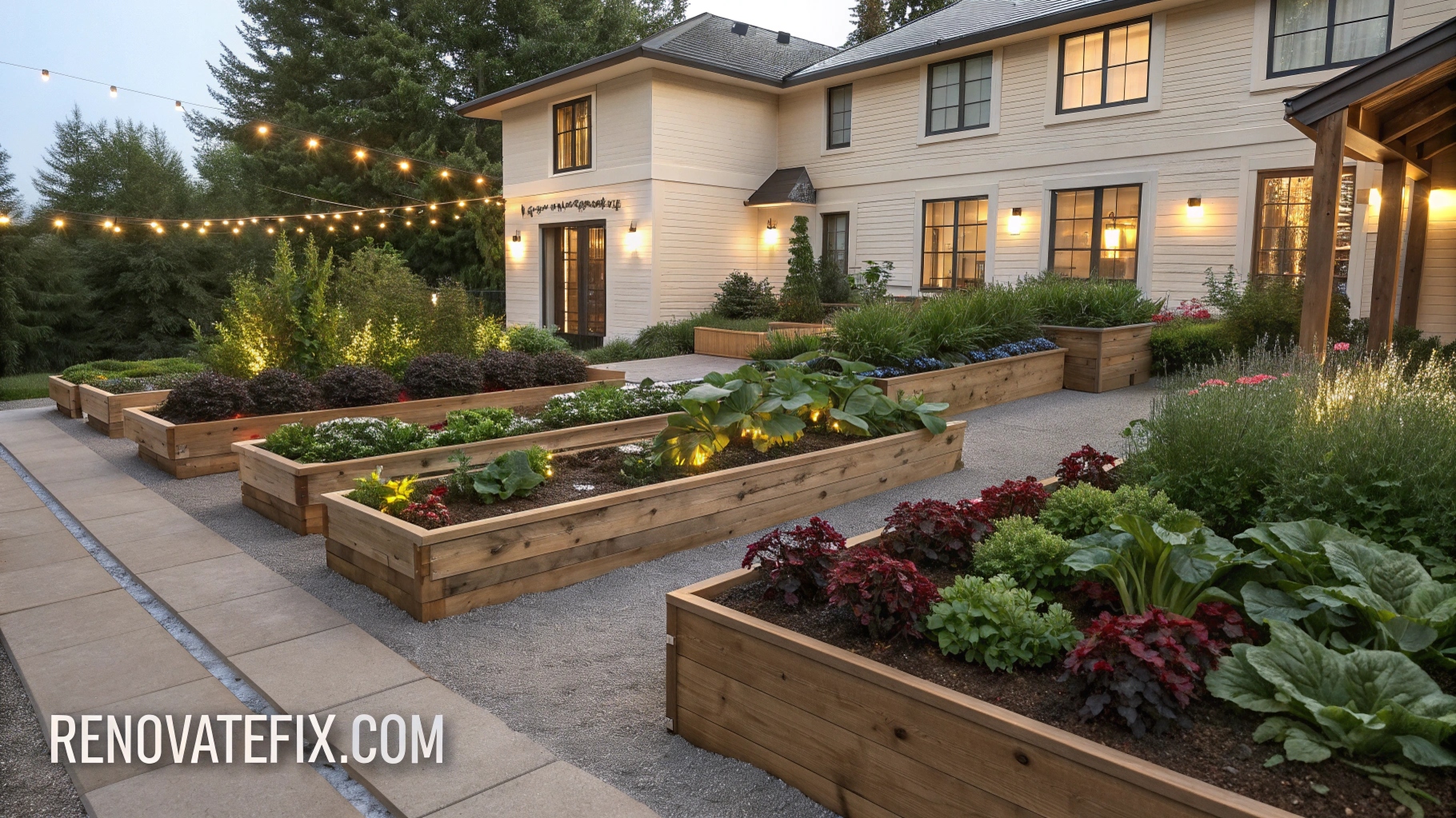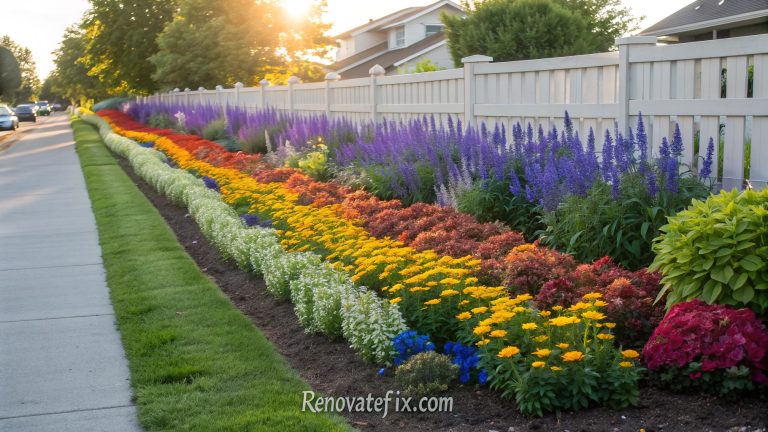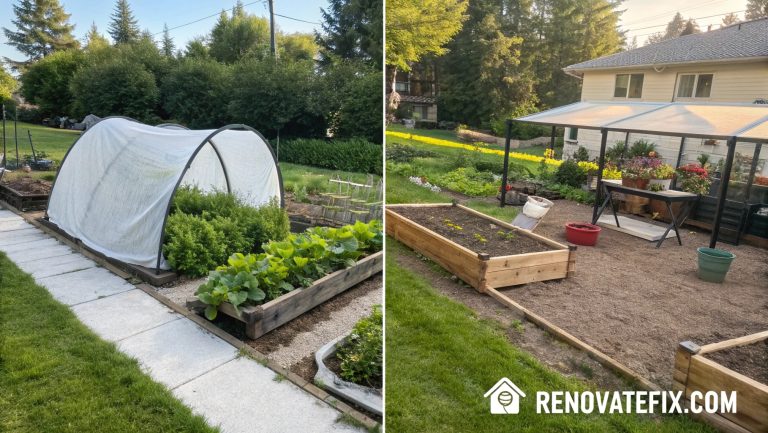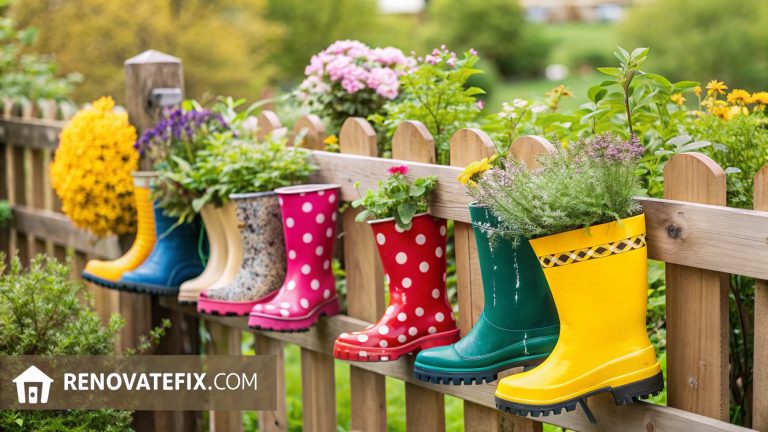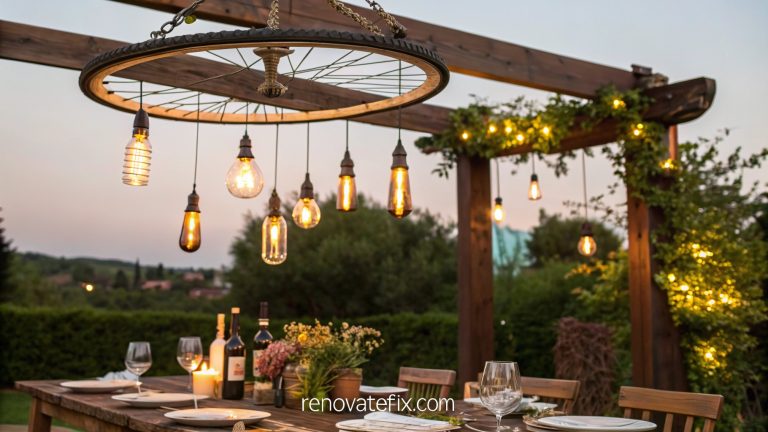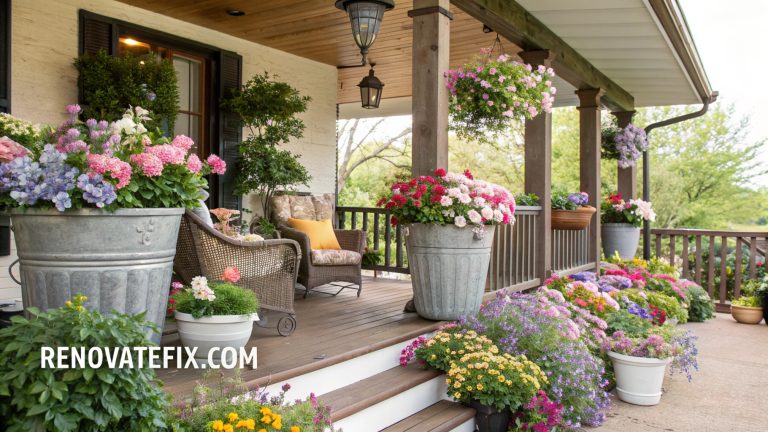Front Yard Landscaping Ideas That Will Boost Your Home’s Curb Appeal15 Front Yard Landscaping Ideas That Will Boost Your Home’s Curb Appeal
The front yard is your home’s first impression—a canvas waiting to be painted with your personal style.
A thoughtfully designed landscape not only enhances your property’s aesthetic appeal but can significantly increase its value.
Whether you have a small urban space or sprawling suburban grounds, implementing creative landscaping concepts can dramatically change your home’s exterior appearance.
This guide explores fifteen innovative front yard concepts that balance beauty, functionality, and sustainability, helping you create an outdoor space that welcomes guests and brings joy each time you arrive home.
15 Front Yard Landscaping Ideas
1. Drought-Resistant Xeriscape
A water-wise xeriscape utilizes native plants requiring minimal irrigation while providing year-round visual interest through varied textures and heights.
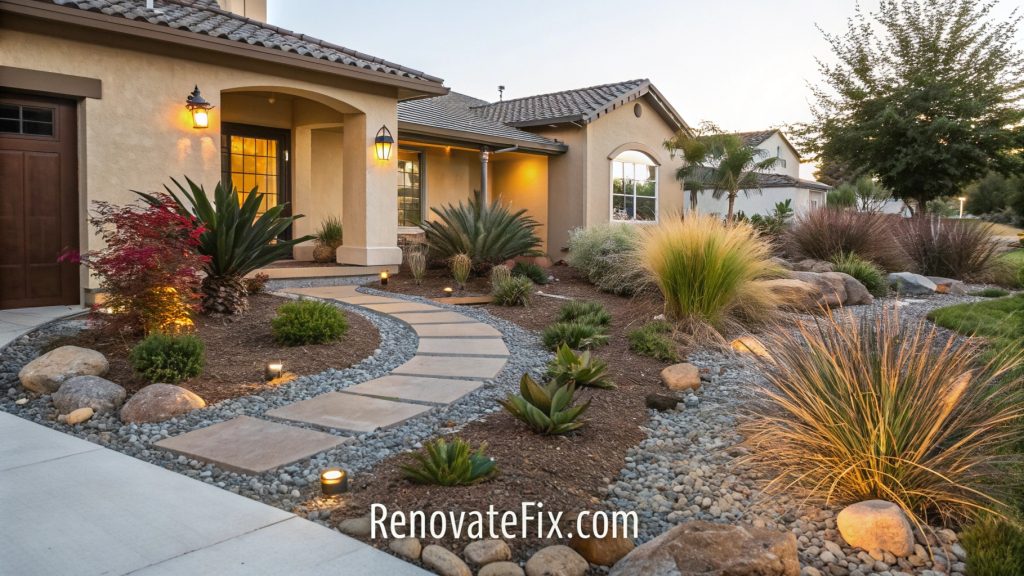
Strategic placement of succulents, ornamental grasses, and flowering perennials creates a low-maintenance environment that thrives in challenging conditions without sacrificing aesthetic appeal.
This approach reduces water consumption substantially while offering a distinctive look that stands apart from conventional grass-dominated yards.
2. Cottage Garden Pathway
Winding pathways lined with abundant flowering plants create an inviting journey toward your doorway, evoking nostalgic charm through informal plantings that seem to have naturally evolved over time.

Mixing perennials like coneflowers, daisies, and salvias with ornamental grasses provides continuous blooms throughout growing seasons while maintaining a casual, collected aesthetic that improves with age.
Morning dew glistening on these diverse botanical collections creates magical moments daily.
3. Vertical Garden Wall
Utilizing vertical space maximizes growing potential in limited areas while creating dramatic visual impact through living walls of plants arranged in artistic patterns.
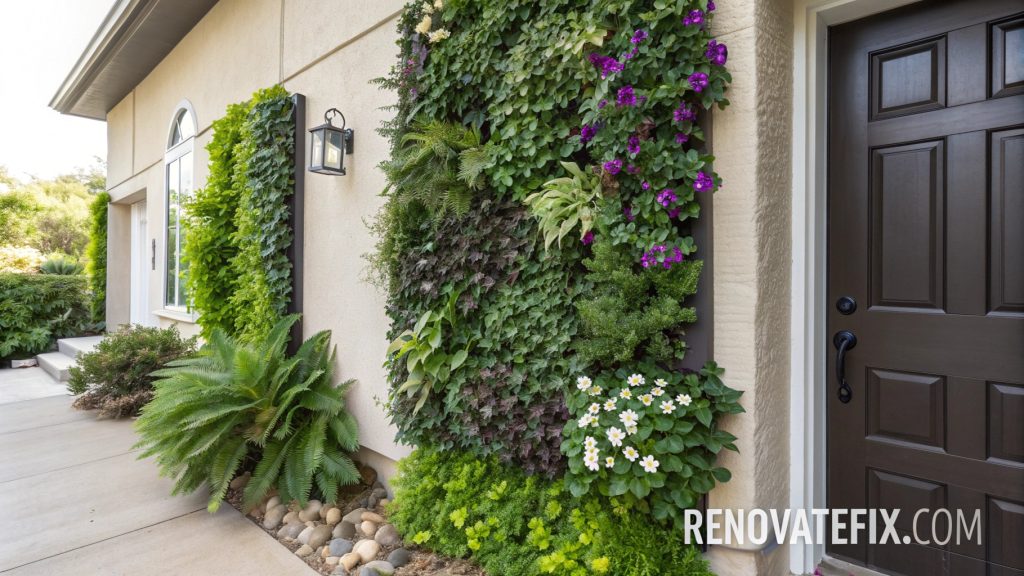
Various ferns, small flowering plants, and cascading vines grow from specially designed panels or pocket systems, bringing vibrant greenery to previously unused surfaces like boundary walls or unsightly structural elements.
This approach particularly benefits urban dwellings where ground space remains precious yet outdoor beauty feels essential.
4. Rain Garden Basin
Environmentally conscious homeowners appreciate how rain gardens collect stormwater runoff while providing habitat for beneficial insects and birds through strategic placement of moisture-loving native plants.
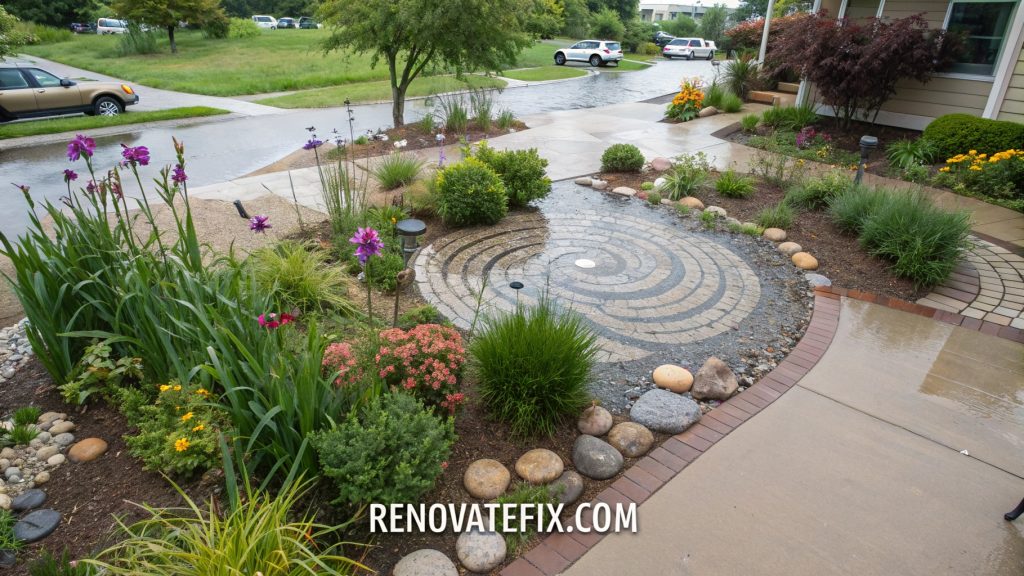
These shallow depressions filled with water-tolerant species like iris, cardinal flower, and switchgrass prevent erosion and flooding issues while purifying water naturally before it enters groundwater systems.
When properly positioned, these functional gardens become focal points during precipitation events.
5. Edible Front Yard Oasis
Growing culinary herbs, vegetables, and fruit-bearing plants transforms ordinary spaces into productive gardens that nourish both body and soul while maintaining aesthetic standards expected in residential neighborhoods.
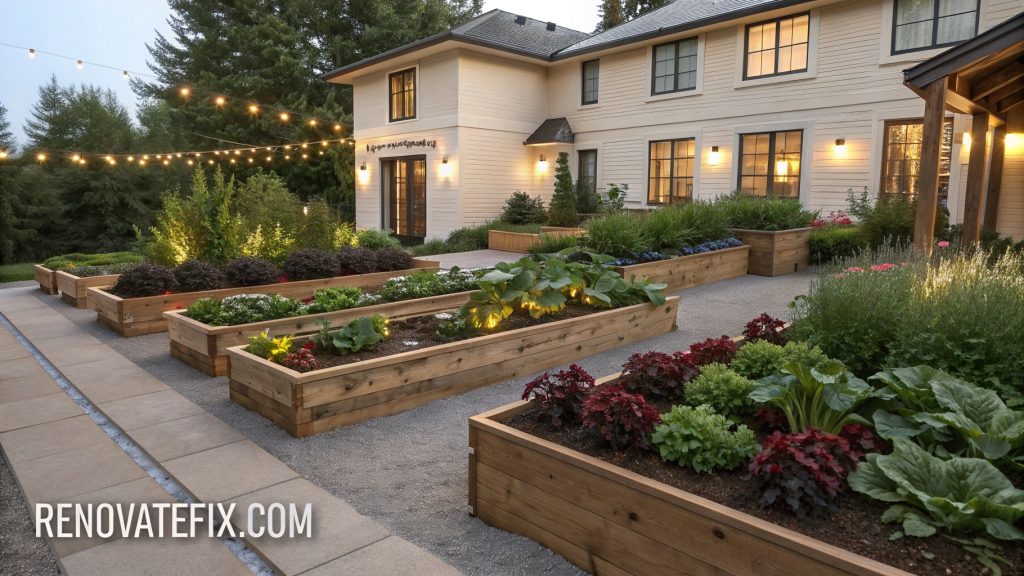
Artfully arranged raised beds containing rainbow chard, compact berry bushes, and flowering herbs intermingle with ornamental specimens, demonstrating how food production needn’t sacrifice beauty.
Visitors commonly pause to admire these functional landscapes, sparking community conversations about sustainable living practices.
6. Woodland Shade Retreat
For properties blessed with mature trees, understory plantings create peaceful sanctuaries reminiscent of forest floors through carefully selected shade-tolerant species that thrive beneath canopies.
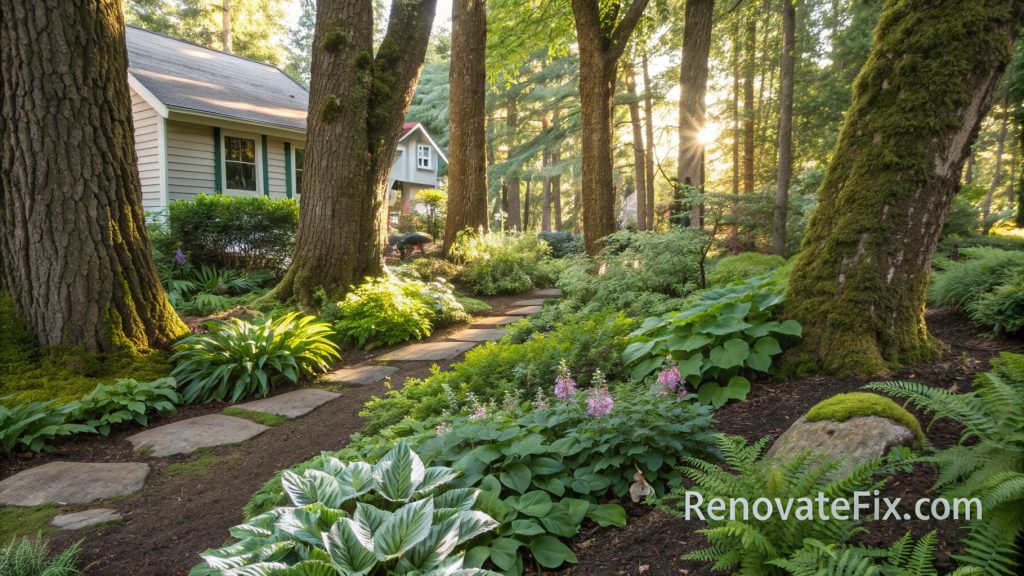
Hostas, ferns, astilbe, and woodland wildflowers form lush ground layers while interesting bark textures and dappled light patterns contribute additional visual elements throughout changing seasons.
Moss-covered stones and natural mulches complete these serene spaces where wildlife finds refuge.
7. Prairie Meadow Conversion
Converting conventional lawns into miniature prairies using native grasses and wildflowers supports local ecology while reducing maintenance needs through plants naturally adapted to regional conditions.

Stands of little bluestem, purple coneflower, black-eyed Susan and goldenrod sway gracefully in passing breezes, creating movement and seasonal interest from spring emergence through winter seed heads.
Birds and butterflies quickly discover these habitat-rich environments.
8. Formal Symmetrical Layout
Geometric precision brings order and elegance through carefully planned arrangements where balance and repetition create harmonious landscapes reminiscent of classical garden designs adapted for modern sensibilities.

Perfectly clipped hedges, matched container plantings, and mirrored bed layouts establish structured frameworks where selected specimen plants receive proper visual emphasis.
This approach particularly complements architectural styles with strong symmetrical elements.
9. Gravel Garden Oasis
Inspired by arid landscapes, gravel gardens minimize water usage while maximizing textural interest through carefully selected plants rising from stone surfaces like architectural sculptures emerging from desert floors.

Ornamental grasses, yuccas, and low-growing spreading perennials with silver or blue foliage create striking combinations against varied stone colors and sizes.
Morning and evening light particularly enhances these compositions through dramatic shadows and highlighted plant silhouettes.
10. Pollinator Paradise
Butterfly and bee-friendly plantings support crucial ecological functions while providing constant visual delight through succession planning ensuring continuous blooms from early spring through late autumn.
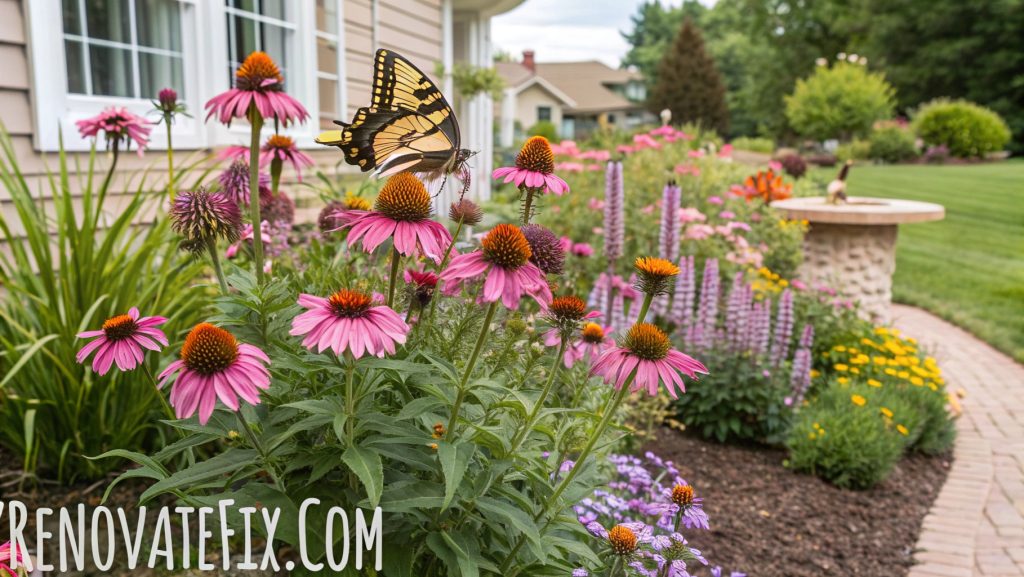
Coneflowers, bee balm, salvia, and asters attract diverse insect species whose activities bring gardens to life with movement and sound.
Watching pollinators visit these flower-rich environments provides endless fascination while contributing positively to environmental health.
11. Asian-Inspired Minimalism
Finding beauty in simplicity, minimalist approaches emphasize clean lines, carefully selected specimen plants, and negative space that allows each element proper appreciation within harmonious compositions.
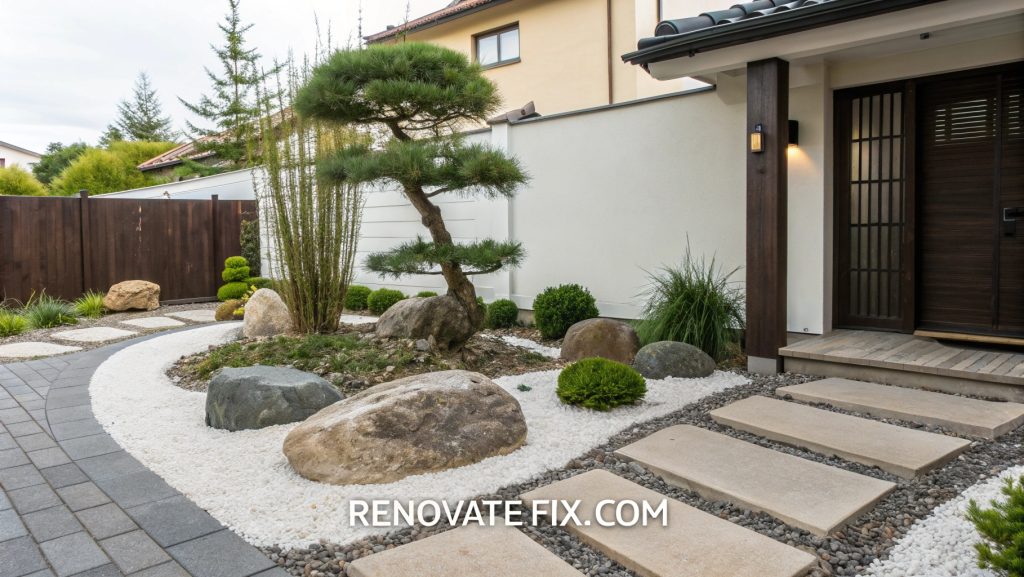
Restrained color palettes featuring primarily greens with occasional accent hues create peaceful environments where carefully pruned small trees, mosses, and ground covers establish tranquil scenes.
Natural stone elements complement plant material through similarly restrained forms and colors.
12. Year-Round Structure Focus
Evergreen shrubs, ornamental trees, and architectural perennials with interesting winter forms provide constant visual interest regardless of season through thoughtful planning emphasizing plant structure beyond mere flowering periods.

Strategic placement of conifers, hollies, and plants with decorative seed heads ensures landscape remains engaging during dormant months when many gardens lose appeal.
Well-placed lighting further enhances these structural elements during winter evenings.
13. Modern Hardscape Fusion
Blending built elements with strategic plantings creates dynamic interaction between architecture and horticulture through geometric paving patterns, retaining walls, and raised planters constructed from complementary materials.
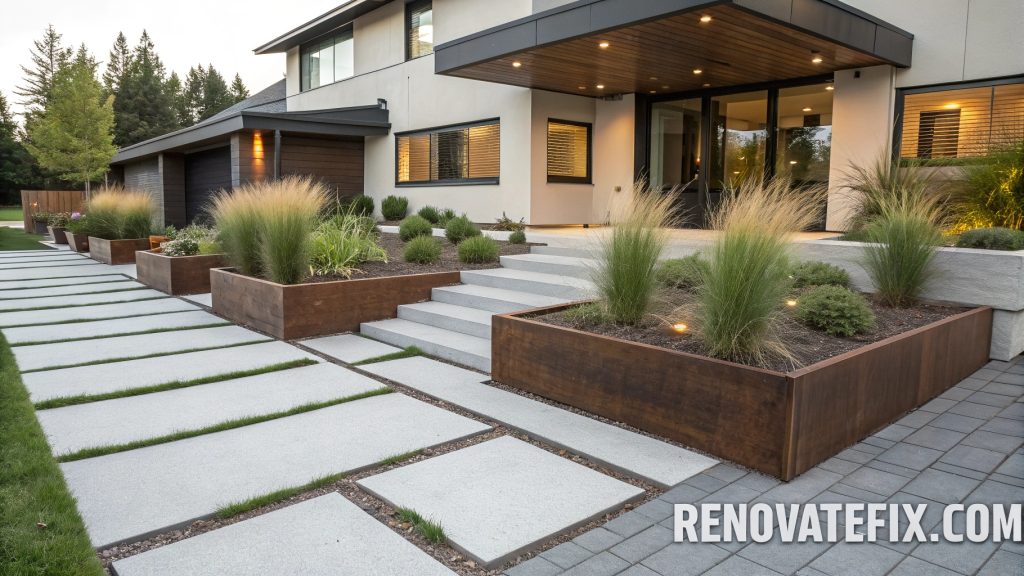
Concrete, steel, and wood elements establish strong visual lines softened by carefully positioned plant groupings where textural contrasts become primary design features.
This balanced approach honors both constructed and growing elements equally.
14. Natural Rock Garden
Utilizing existing slopes or creating artificial elevation changes provides perfect conditions for alpine and rock-loving plants to cascade over stone arrangements in naturalistic displays mimicking mountainous terrain.
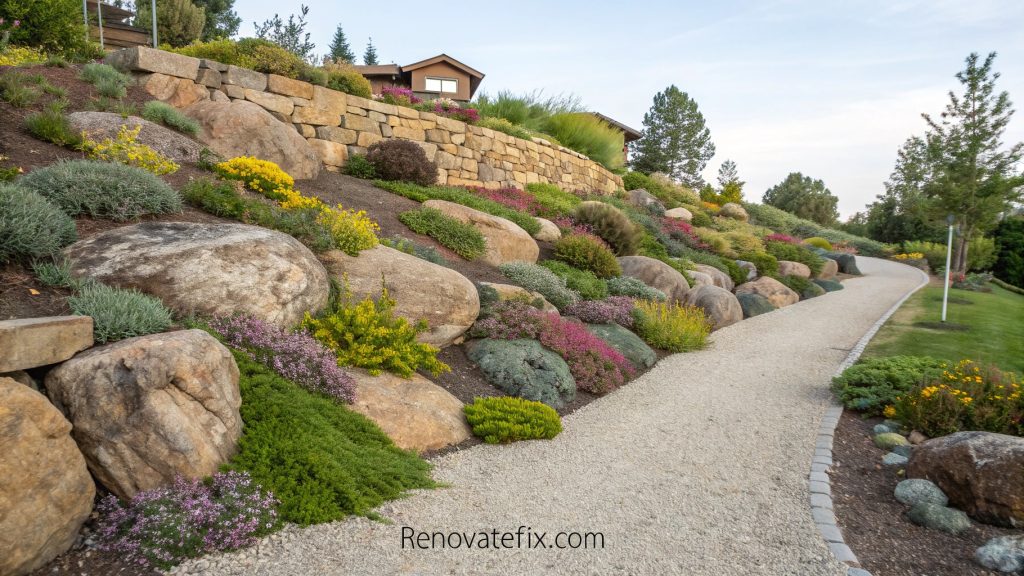
Low-growing sedums, sempervivums, dianthus, and creeping thyme spread between carefully positioned boulders, creating miniature landscapes reminiscent of rugged natural environments.
These gardens require minimal water once established and provide excellent drainage for specialty plants.
15. Night Garden Illumination
Strategic lighting transforms evening landscapes through carefully positioned fixtures highlighting key garden features, extending outdoor enjoyment hours while creating entirely different aesthetic experiences after sunset.

Uplighting specimen trees, illuminating pathways, and highlighting architectural plants with interesting shadows produces dramatic nighttime scenes visible from both inside homes and street perspectives.
Modern solar options make these installations increasingly accessible without significant energy costs.
Conclusion
Creating an exceptional front yard landscape involves balancing aesthetics, functionality, and sustainability while expressing your personal style.
The fifteen ideas presented offer starting points for reimagining your outdoor space, whether you prefer structured formality or naturalistic abundance.
Remember that successful landscaping evolves over time—plants mature, seasonal changes bring new dimensions, and your vision may refine as you interact with the space.
Begin with a thoughtful plan addressing your specific site conditions, maintenance capacity, and design preferences.
With patience and care, your front yard will develop into a welcoming environment that brings daily joy while contributing positively to your neighborhood’s character and local ecosystem.
